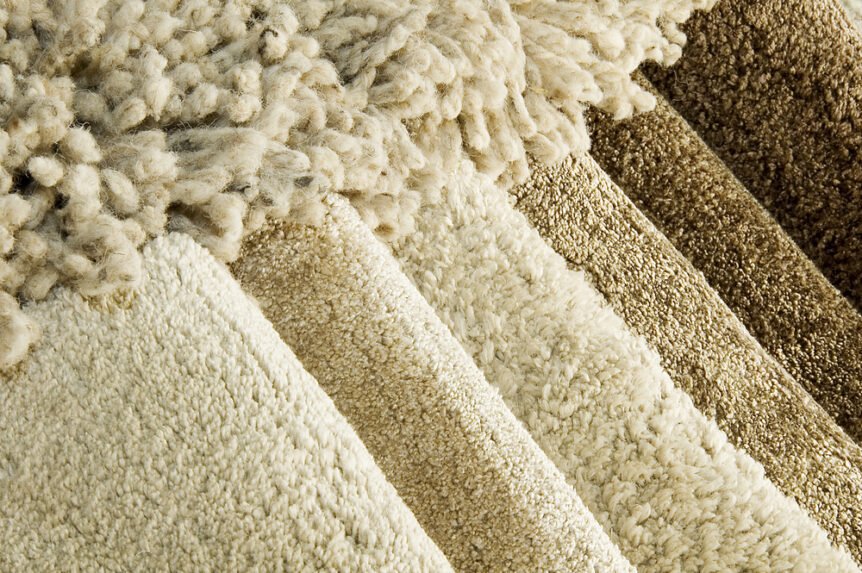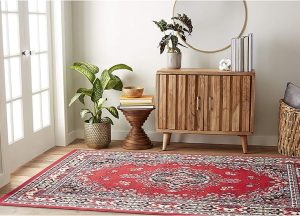Sisal carpet is a top choice for those seeking natural, eco-friendly flooring that’s as stylish as it is sustainable. Made from the hardy fibers of the agave plant, sisal is known for its durability, resilience, and earthy texture. Unlike synthetic carpets, sisal is biodegradable, chemical-free, and has a low environmental impact, making it ideal for green living spaces. This natural fiber carpet not only adds a unique, organic charm to any room but also stands up well to high-traffic areas. In this guide, we’ll explore the benefits, uses, and maintenance tips for sisal carpet to help you decide if it’s the perfect fit for your home.
What Is Sisal Carpet?
Sisal carpet is made from the natural fibers of the agave plant, specifically the Agave sisalana, which thrives in arid climates. Known for its durability and rugged texture, sisal stands apart from other natural fibers, like jute or seagrass, which are softer and less resilient. Unlike synthetic carpets, sisal is free from chemical treatments, making it a favorite among eco-conscious homeowners. Its coarse, woven texture gives rooms an earthy feel that’s both stylish and practical. Sisal carpets also tend to come in natural, neutral tones, making them versatile for various decor styles, from modern to rustic.
The Benefits of Sisal Carpet
Sisal carpet offers a range of benefits, especially in high-traffic areas. It’s extremely durable, handling foot traffic better than many natural fibers and even some synthetic carpets. Environmentally, sisal is a sustainable choice because it’s biodegradable and requires minimal resources to produce. It’s also hypoallergenic, as it doesn’t trap dust and allergens like synthetic carpets, making it ideal for homes with allergies. Plus, its natural texture adds a unique charm to rooms, combining aesthetics with functionality. For those looking to add both style and sustainability to their spaces, sisal carpet is a wise choice.
Eco-Friendly and Sustainable Qualities of Sisal
Sisal is known for its sustainable qualities, making it a favorite among eco-conscious consumers. The agave plant grows quickly in arid regions with minimal water, and its leaves are harvested repeatedly without harming the plant itself. Sisal production has a low environmental impact, as it doesn’t involve synthetic chemicals or dyes, which reduces its carbon footprint. Additionally, sisal is biodegradable, breaking down naturally at the end of its life. For homeowners seeking green alternatives in home decor, sisal offers an environmentally responsible flooring option that balances style, durability, and sustainability.
Design and Aesthetic Appeal of Sisal Carpet
Sisal carpet adds natural warmth and texture to any space, thanks to its earthy, woven appearance. It’s typically available in neutral colors like beige, cream, or light brown, blending easily with a variety of interior design styles. Whether used in a minimalist, rustic, or coastal-themed room, sisal complements other natural materials like wood and stone beautifully. Though primarily neutral, sisal carpets are available in different weaves, from tight to chunky, adding a unique, subtle pattern to floors. Its understated yet stylish appearance makes it a versatile choice for almost any home decor.
Best Places to Use Sisal Carpet in the Home
Sisal carpet works well in areas with regular foot traffic, such as living rooms, hallways, and staircases, where its durability shines. It’s also a popular choice for home offices and bedrooms, where its natural texture adds warmth without overpowering the decor. However, sisal is not water-resistant, so it’s best avoided in moisture-prone areas like bathrooms and kitchens, as it can stain or warp. For spaces needing both style and strength, sisal provides a hard-wearing, attractive option that enhances room aesthetics while remaining practical and long-lasting.
Maintenance and Care Tips for Sisal Carpet
Maintaining sisal carpet requires specific care to ensure it remains in good condition. Regular vacuuming is essential to remove dirt and prevent particles from embedding in the fibers. Spills should be addressed immediately—blotting with a dry cloth is recommended, as sisal is highly absorbent and prone to staining. Steam cleaning and water-based cleaners should be avoided to prevent water damage. Adding a rug pad beneath the carpet can help extend its lifespan by reducing wear and providing additional comfort. With proper care, sisal carpet retains its beauty and functionality for years.
Cost and Longevity of Sisal Carpet
Sisal carpet tends to be more affordable than luxury options like wool, yet it offers a similar level of durability. While it may cost more upfront than synthetic carpets, its resilience and natural appeal make it a worthwhile investment. Sisal’s longevity in high-traffic areas means that it often outlasts cheaper synthetic alternatives, which can wear out or stain more easily. For those seeking a balance between quality, sustainability, and price, sisal offers a good value. Its durable nature allows homeowners to enjoy both the aesthetic and practical benefits without frequent replacements.
Alternatives to Sisal Carpet
While sisal offers unique benefits, there are other eco-friendly carpet options worth considering. Jute, for instance, is another natural fiber with a softer feel but less durability, making it ideal for low-traffic areas. Seagrass is more stain-resistant than sisal, making it a better choice for homes with kids or pets. Wool is another durable natural fiber, offering softness and insulation but at a higher price point. By comparing the feel, durability, and aesthetics of these alternatives, homeowners can find the ideal carpet that suits their specific needs and preferences.
Conclusion: Is Sisal Carpet Right for Your Home?
Sisal carpet combines sustainability, durability, and style, making it a smart choice for eco-conscious homeowners. Its natural texture and neutral tones bring warmth and sophistication to any room, while its durability makes it a practical choice for busy areas. However, it does require specific care to maintain its appearance and is not suitable for moisture-prone spaces. For those who value both aesthetics and sustainability, sisal carpet is an excellent investment that adds natural charm to the home. If eco-friendliness and longevity are top priorities, sisal might be the perfect fit for your floo

Where can sisal carpet be used?
Sisal carpet has become a popular flooring choice for homeowners who value both durability and sustainability. Made from the strong fibers of the agave plant, sisal is known for its eco-friendly nature, stylish texture, and ability to withstand heavy foot traffic. Its natural golden or beige tones add warmth and elegance to interiors, making it a versatile option for a variety of design styles, from modern minimalist spaces to rustic or traditional homes. Beyond its aesthetic appeal, sisal is a practical choice because of its resilience, long-lasting performance, and low environmental impact. However, like any flooring material, sisal has ideal settings where it thrives and environments where it is not recommended.
Sisal carpets are best suited for dry indoor spaces. Living rooms are a perfect location, as sisal adds both comfort and a sophisticated natural look that complements furniture and décor. Bedrooms are another excellent choice, providing a cozy, stylish, and eco-conscious flooring solution. Sisal is also effective in high-traffic areas such as hallways and staircases, where its durable fibers can handle daily wear without losing their appeal. Offices and workspaces can also benefit from sisal’s professional, textured appearance while maintaining a sustainable edge.
frequently asked questions about Sisal Carpet
What is sisal carpet?
Sisal carpet is a natural flooring option made from the fibers of the agave plant. It’s known for being durable, eco-friendly, and stylish.
Is sisal carpet durable?
Yes, sisal is very durable and works well in high-traffic areas like living rooms, hallways, and offices.
Is sisal carpet eco-friendly?
Absolutely. Sisal is a biodegradable, sustainable material, making it an excellent choice for eco-conscious homeowners.
Where can sisal carpet be used?
It is best suited for dry indoor areas such as bedrooms, stairs, and living spaces. It is not recommended for bathrooms or humid environments.
What are the advantages of sisal carpet?
Strong and long-lasting Eco-friendly and biodegradable Adds a natural, elegant look Resistant to wear in busy spaces
What are the disadvantages of sisal carpet?
Sensitive to moisture and stains Can feel rough underfoot Harder to clean compared to synthetic carpets








